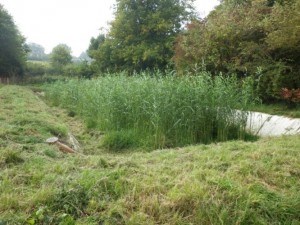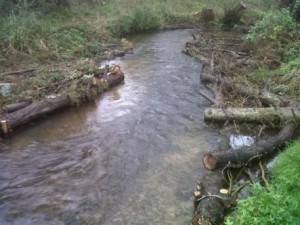Guest blog by David Baxter, Indepen
If you say catchment to a parent, they think: school. To me, catchment is our landscape, the water that flows through it and the people who live in it. Catchment and community are inseparable.
Since 1990, water companies in England and Wales have invested over £120 billion to clean up their act and clean up the water environment. This has helped the UK shake off the ugly, but deserved label, ‘dirty man of Europe’. That investment was hugely successful in taking out gross-sources of pollution, using concrete and process technologies.
Despite this, and an ongoing programme of investment by water companies, problems remain. Fewer than a quarter of England’s waters meet the long-term standards required. It is now clear that the causes of this failure are as much connected to our broader uses of land and water as they are to water companies. Nutrients, sediments, pesticides and slurries from farming (to meet our needs for affordable food) cause as many problems to our water environment as sewage. Physical modifications and drainage (to meet our needs for resilient infrastructure and economic growth) cause many more disturbances than abstractions of water for public supply. These problems are spread out, often with no specific individual polluter.
Perversely, the cost of solving quality problems through land management, urban and rural, is often lower than it would be to use asset based, water company solutions. What is more, the additional benefits of catchment based solutions are widespread. These range from increased flood protection, more resilient water supplies, carbon storage and enhanced biodiversity.

Two catchment solutions in action. Micro-wetlands and swales can hold back peak flows and treat pollution from run-off. Flow deflectors can create habitat diversity and maintain fast flowing water when levels have dropped. Both are outputs from community catchment projects.
Water companies are alert to the fact that traditional, capital solutions are no longer the whole answer, particularly when the bill for future improvements will exceed £16 billion. Traditional approaches would lock their customers into repaying debt at interest rates that might not always be so kind. But more importantly, catchment based solutions could actually be £1 billion cheaper over the next 15 years and could unlock a further £5 billion of wider benefits to society.
Some final thoughts. Catchment management is not just about our environmental well-being. Catchment solutions are at the heart of enabling economic growth. There is a clear business case for connecting catchments, communities and businesses.
But to work in catchments, with communities, water companies (and other businesses) need to build trust in their brand. They need ambassadors and activists to broker deals and show water customers what catchment projects look like. In fact, what water companies need is to get on to Neighbourly. So congratulations to Wessex Water for doing that, and let’s hope that others follow suit.
About David
I work for Indepen, a boutique management consultancy specialising in the economics, financing and regulation of the infrastructure sector, helping businesses succeed by building social and natural capital. Prior to that I worked in the Environment Agency for over twenty years, latterly being the lead for their approach to catchment management and implementing the Water Framework Directive. Water is the focus of my working day; I leave beer and wine to the evening.
